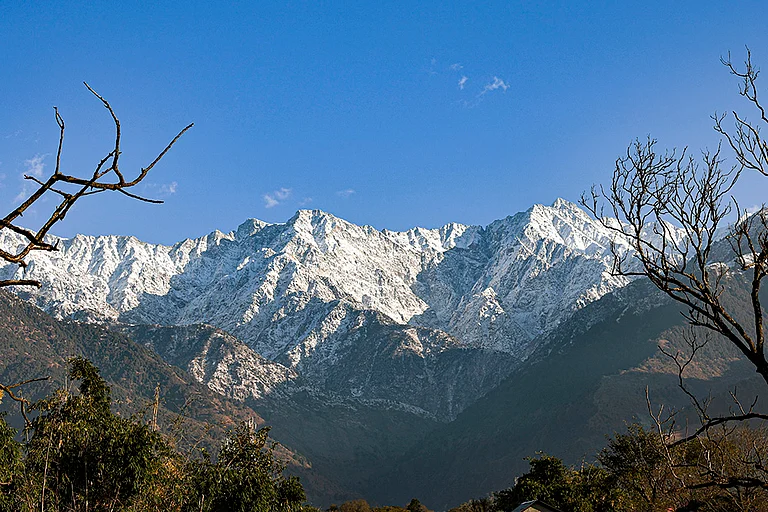With a loaded quiver slung across his shoulders, bow-string taut with tension, and an arrow primed for release, a young Ram’s maiden assault on a member of the rakshasa (demon) clan, a rakshasi in this case, Thataka, is one of the many moments of ecological glory coded into India’s most revered mythological texts, the Ramayan, claim experts. The epic, whose multiple renditions are known for the proverbial and more obvious battle of good versus evil, according to scholars, also contains embedded narratives about the importance of ecology, nearly two millennia before environmental degradation became a global scourge.
Sage Vishwamitra had invited the blue-blooded Ram and his hot-headed brother Lakshman to the forests outside Ayodhya that were ravaged by Thataka and her powerful sons Mareecha and Subahu. The trio had also been tormenting sages living in the forest, routinely disrupting their rituals and yagnas. “Nothing flourishes here, only heat and dust remain. She is a scorcher…The name of this fearsome creature is Thataka. Just as the presence of a little loba (greed) dries up and disfigures a whole human personality, so does the presence of a monster turn into a desert a region which was once fertile,” says one of India’s most well-known writers, R.K. Narayan in his translation of the Ramayana.
Narayan, in his English translation of the epic, links unmitigated greed to destruction of forests and wildlife, which is perhaps today almost a universally acknowledged trigger for environmental degradation. Thataka, according to Professor Swarnalatha R. of the Department of Humanities and Social Sciences at the Indian Institute of Technology, Madras, is symbolic of desertification and unmitigated greed. “When she enters the thick forest-scapes of the Ramayan, the forest dries up. T(h)ataka, can be considered a symbol of the dark Anthropocene condition of our world, in which human actions propelled by unsustainable greed have modified the planet once for all and rendered fallow the good earth that was once fertile and bounteous,” says Swarnalatha.
While the main plot-points of the Ramayan dedicate themselves to the story of sacrifice, obedience, devotion, the battle of virtuous morality and triumph of good, the backdrop of the great epic lends itself as a botanist’s delight. Eons after Sage Valmiki wrote his tome, he continues to earn kudos from environmental experts like Murugesan Amirthalingam and Padamati Sudhakar Reddy, who wrote an authoritative research paper, Plant and Animal Diversity in Valmiki’s Ramyan, depicting the abundant flora and fauna, which Ram, Sita and Lakshman, and later Hanuman, may have encountered during their travels.
Take the example of the trio’s foray into the Dandakaranya forests, a terrain known for being inhabited by tigers, lions and demons. Prides of lions no longer roam the grounds of the modern-day Dandakaranya that comprises land-tracts spread across several parts of Central India, but according to Amirthalingam and Reddy, Valmiki may not have been too far off the mark in his documentation of lions in the area in his Ramayan. “...at the Bhimbetka rock shelters, we found a prehistoric painting of a lion and a tiger together that corroborates Valmiki’s text,” the authors write in their research paper.
According to the scientist duo, the Ramayan mentions 182 species of plants and trees along the route of the vanvas that the royal trio set out on. “The Ramayan is geographically very correct. Every site on Ram’s route is still identifiable and has continuing traditions or temples to commemorate Ram’s visit. Around 1000 BC, no writer had the means to travel around the country inventing a story, fitting it into local folklore and building temples for greater credibility,” say the authors, who spent three years trekking along the sanyas route.

Ram, Sita and Lakshman’s period of banishment in the forests has now been tweaked into a tourism circuit with potential for revenue generation. The project, led by the Chhattisgarh state government, aims to complete the first phase of the ‘Ram Gaman circuit’ by next year, amid a great deal of popular anticipation.
Apart from the focus on the obvious story of the gods and demons, the forests themselves have been elaborated on in great detail and nuance in the text. According to Swarnalatha, the Ramayan also establishes the dichotomy between life in the city and in the forests, a lesson for modern-age dwellers, who are constantly torn between the urban and the pastoral.
It is in the realm of the forests and the hardship it entails, she argues, that the “trajectory” of the Indian epic’s heroes assumes “full stature”. “This landscape of ‘otherness’ provided the opportunity to build a bridge between the dualities of culture and nature and move away from the urban purusharthas (objects of human pursuit) of artha (wealth) and kama (desire) to embrace dharma (moral order) and moksha (liberation),” Swarnalatha argues.
When Sita leaves Ayodhya with her sons, Luv and Kush, the forest continues to welcome her, even after the city banishes her, according to Paula Richman, Professor of South Asian Religions at Oberlin College, Ohio. “In his Ramayan, Valmiki also portrays the forest as a place of shelter and refuge… The city has banished her, but the forest welcomes her,” Richman, a renowned Ramayana expert, said in an interview with Swarnalatha.
Aided by the arrival of Hanuman in the lives of the royal Ayodhya trio and the leap of faith of the monkey-god, Valmiki, too takes a geographic leap across the expanse of the Indian subcontinent, providing a glimpse of the floral bounty of the region. With Lakshman critically injured in battle in Lanka, druid Sushena instructs Hanuman to travel briskly to the Dronagiri mountains to fetch four medicinal plants, critical for the prince’s survival. Hanuman’s inability to identify the four herbs makes him fetch the whole mountain all the way back to Lanka, by flying across the length of the subcontinent.
ALSO READ: In The Land Of Asurs Where God Is Formless
Amirthalingam and Reddy also claim that recent research has revealed three species in the Himalayan range, namely the Cressa cretica (Pola pola, Cretan alkaliweed), Selaginella bryopteris (Asian spikemoss) and Desmostrichum fimbriatum (Jiwanti), which could be likened to the herbs Hanuman was scouting for.
According to Richman, Hanuman’s mountain-fetching feat itself paints a “picture of great biodiversity” in the Ramayan. “For example, consider Hanuman trying to locate the life-giving sanjivani herb. But that there are so many herbs on that hill that Hanuman simply cannot remember the name of the herb that he was supposed to bring back,” Richman says.
Trees were revered not just on Ram’s turf, India, but on Ravan’s Lanka too, so much so that there were “strict injunctions” on the island nation. “The Ramayan observes that even during the reign of Ravan, the planting of trees was considered a worthy objective,” they said. Apart from its veneration of trees and plants, the Ramayan, including its genesis itself, is also rooted in empathy for animals and birds, argues Swarnalatha. “On witnessing the painful death of the Krouncha bird (Demoiselle Crane) by the hunter’s arrow and the agony of separation experiences by its mate, Valmiki felt inspired to write about the tragedy of separation of Ram and Sita in the great
epic,” she says.
ALSO READ: Asura: The Last Words Uttered By Ravan
She also recounts Ram’s encounter with squirrels during the construction of the sethu from the mainland to Lanka to bolster her point. When a squirrel tugs along tiny pebbles and sand to aid the construction of the bridge, the small creature is mocked by the army of monkeys doing the heavy work of lugging boulders and launching them into the sea. “Ram silences (the) criticism by pointing out that however small, every task is important, and the tiny grains of sand brought by the squirrel help bind the structure and make it strong” she says.
Valmiki’s, last instalment of the epic, the Uttar Kaand, however also notes an unsavoury incursion of city mores into life in a forest, says Richman citing the tragic instance of Shambuka, a Shudhra ascetic, known for his fierce passion for penance. The calibre of his penance was so severe, that an anthill made home on his body during one spell.
When Ram stumbles upon Shambuka in the forest, he asks the ascetic if he was a Shudra. “Shambuka says ‘yes’ and Ram cuts his head off. Later, writers such as Bhavabhuti (8th-century scholar) and K.V. Puttappa (Kannada poet) found this incident so troubling that they transformed it, but Valmiki included it in his Uttar Kaand, showing how the rules of the city and its politics can even intrude in the forest. So, this gives you a very complex idea of the forest,” Richman reasons.
Ramayan has stood the test of time, and generations have been inspired and influenced by the countless commentaries on morality, virtue, good and evil that have woven themselves around the epic. Perhaps, it is time to weave in a thread of environment and ecological preservation in the fabric, in order to address the greatest crisis of this era.
(This appeared in the print edition as "Ramayan as an Ecological Toolkit")



























